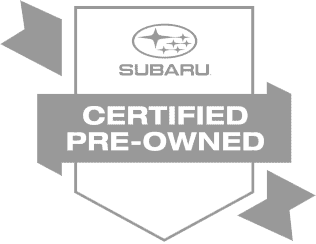

The dash in your Subaru is filled with a number of warning lights that will alert you if there's a problem you need to take care of in your vehicle. One of the most misunderstood among these lights is the Check Engine Light, or CEL. At Capitol Subaru, we want to provide information that enables you to understand more about your Subaru, and that's what this page is for. We'll go over the CEL below, giving you valuable information on what it could mean and how to respond to it.

4. What Does the Check Engine Light Mean?
The short answer is that the check engine light can mean a number of things. However, they all have one thing in common: the car's computer, also known as an Engine Control Module (ECM) or Engine Control Unit (ECU).
Unless you're driving a classic car, your vehicle has an ECM that gets information from a number of sensors and uses this information to make sure your car is performing as it should. If the ECM gets a sensor reading indicating that something is amiss, it will make necessary adjustments. For example, the oxygen sensor may detect too little oxygen in the exhaust, indicating that the fuel/air mixture is running rich. The sensor will send this information to the ECM, which can then adjust the fuel injectors or the air flow, resulting in a proper mixture once again.
The check engine light is your vehicle's way of telling you that the ECM has detected a problem that it's unable to correct on its own.

3. What Are Some Things That Could Cause the Check Engine Light To Illuminate?
Since the ECM gets its readings from various sensors, a broken sensor may trigger the Check Engine Light. Take the oxygen sensors, for example. If one (or both) is broken and not sending information to the engine, your ECM will not know whether the fuel/air ratio is correct. This can lead to excess fuel being burned. But it's not only bad sensors that can trigger the Check Engine Light. Damaged components like the catalytic converter or the EVAP purge valve will not be able to be fixed by the ECM making adjustments. These are just a few of the potential causes of an illuminated Check Engine Light. Anything from worn spark plugs to bad fuel injectors could trigger the light. With that in mind, you may be asking. . . .
2. How Do I Find Out What the Problem Is?
It can be discouraging to deal with a light that tells you that something is wrong, but you're not sure what. This is where code readers come into play. Whenever the Check Engine Light comes on, the ECM stores a code in its memory that details what triggered the light. Hooking a code reader up to the vehicle will allow you to see which code it is. These codes have been standardized across automakers since the mid-1990s, so any code reader that can read OBD-II codes should do the trick as long as your car isn't older than that. But, while it's possible to buy a code reader for yourself, we recommend heading to the dealership instead. That's because reading the code is just the beginning of the process. Many of the codes will require further investigation to pinpoint the actual source of the problem.

1. What Should I Do if the Check Engine Light Comes On?
The answer to this question depends very much on what the light is doing. If your Subaru has a solid check engine light, it's unlikely that there's an immediate emergency. If you're near your destination, our recommendation is to finish driving. If not, take your time to find a safe, populated parking lot you can pull into. Once you've parked, take the gas cap out and look at it. Is it cracked or damaged? If not, screw it in again, making sure that you secure it tightly. Then, start your car. If the light doesn't turn on, you may only have needed to tighten the gas cap! If the cap itself is damaged, ordering a replacement may be all you need.
Our advice changes if the light is flashing. A flashing CEL is a sign that something serious and time-sensitive is happening. Usually, this means that the engine is misfiring severely, dumping unburned fuel into the exhaust. This can damage or even destroy the catalytic converter, which is a very expensive part to replace. To minimize your chances of damaging the cat, pull over as soon as you can safely do so.
Capitol Subaru of Salem
920 Auto Group Ave NE
Salem, OR 97301
- Sales: 503-587-5500
- Service: 503-587-5500
- Parts: 503-587-5500







